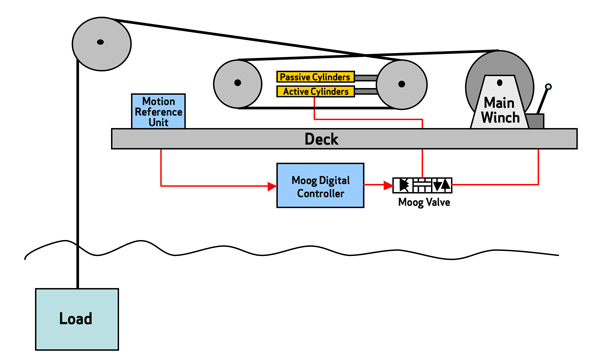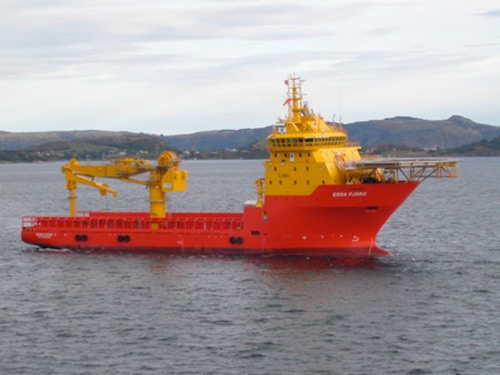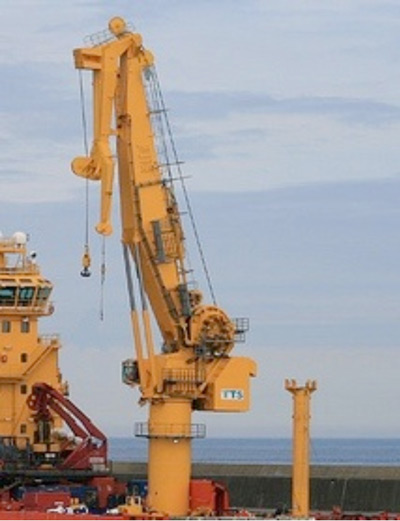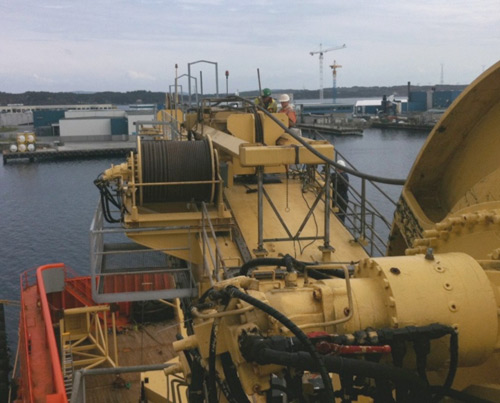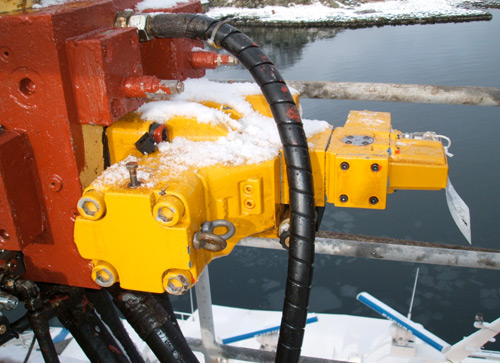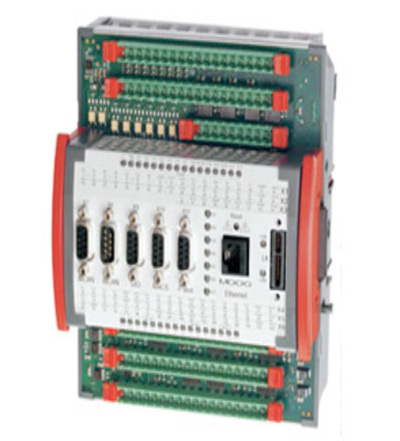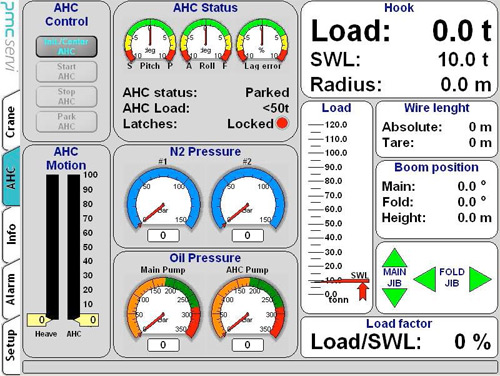One recent trend in the industry is the installation of increasingly complex and sophisticated equipment on the seabed, for oil and gas exploration and production. This requirement presents a unique challenge, as extremely heavy mechanical structures have to be lowered to the seabed by winches or cranes from floating vessels which are subject to wave motion.
A key technique to achieve this is 'Heave Compensation' where the vertical movement of the vessel is electronically monitored and the crane/winch is automaticaly controlled to compensate for this. Effectively the crane cable is continuously paid out or reeled in to allow the load to "hover" above the seabed. The operator of the winch can then generate command signals to the winch drum which are superimposed on the automatic compensation function. This permits the operator to precisely control slow and accurate movements - relative to the seabed.
Functional Schematic
The Edda Fjord
A good example of this technology is the heave compensation actuation system supplied 4 years ago to TTS who specializes in marine winches. This was a system retrofitted to the crane on the vessel "Edda Fjord," operated by Østensjø in Haugesund.
Edda Fjord
The Control System
In this application a Sheave or 'Jigger Winch was added to the original crane hoist winch system. This utilizes a hydraulic cylinder and pulley system to actively vary the effective cable length between the winch drum and the payload being deployed. With this arrangement the winch operator controls the movement of the winch drum in the normal way and the supplementary Sheave system automatically compensates for the rise and fall of the ship.
Edda Fjord Crane
Crane Hoist Winch
A special feature of this system is to use auxiliary cylinders and hydraulic accumulators to support the weight of the load. This increases the performance envelope of the active compensation system as it does not waste energy supporting the load. Essential to this application is the sensing component - the MRU [Motion Reference Unit] which senses the rise and fall of the ship by means of gyros and inertial reference transducers.
The Moog and PMC Servi Solution
Moog in Norway and their technical partner PMC Servi in Norway have a long track record of cooperating to provide innovative solutions for the Oil and Gas Industry. These solutions are focused on precision hydraulic and electric actuation of high loads, in conjunction with intelligent electronic controllers.
PMC Servi designed and manufactured the hydraulic actuation system comprising of a large hydraulic power pack, hydraulic manifold cylinders and electronic controls including the operator interface.
The hydraulic section incorporates a Moog D665 Proportional Valve capable of flows of 3600 l/min (950 gpm) required to give the maximum cylinder velocity of 2.4 m/sec (94 in/sec). This valve is also able to achieve the extremely sensitive position control required, as it is can modulate these large flows with an accuracy of 0.2 %.
The Moog D665 Proportional Valve
Key to the electronic control system is the Moog Digital Servo Controller, the latest evolution of which the Moog Motion Controller is pictured below.
Moog Motion Controller
The key role of the Moog Controller is to compare signals from the Motion Reference Unit and cylinder position sensor and calculate the required correction signals which are sent to the D665 valve at a rate of 250 hz.
Operator Interface Screen
In addition to controlling the heave compensation function the Moog Motion Controller also monitors the correct function of the system and in the event of a system failure initiates alarms and a “fail-safe” procedure to safeguard the load.
The Benefits of the System
The system installed on the Edda Fjord has now been in use for 4 years working in diverse locations including the North Sea, the Baltic and the west coast of Africa. The system is capable of handling loads of up to 200 tonnes (220 tons) with +/- 1.5 m (4.9 ft) wave heights or 100 tonnes (110 tons) with wave heights of +/- 3 m (9.8 ft).
In practice, the performance of the system has easily exceeded the original specification of achieving a 95% attenuation of the wave motion during operation. Typically it has proved possible to make the load “hover” with movements of less than 10 cm relative to the seabed.
To the operator, this sophisticated control system brings a variety of cost and time saving benefits. Subsea assemblies can be installed without the risk of damage to both the assembly itself and other remotely controlled handling equipment such as ROVs (Remotely Operated Vehicles). In addition the operator is able to continue working in more extreme sea conditions saving waiting time and the significant cost of these complex operations.
Author
Martin S. Jones, Market Manager for Niche and Emerging Markets in Europe
Martin is responsible for the Motorsport business around the world and is also the Market Manager for Niche and Emerging Markets in Europe. He has worked for Moog for 30 years in sales and applications engineering for a range of industries including mobile equipment, marine and offshore, blow molding and rolling mills. He studied Physics and Economics at the University of East Anglia.



